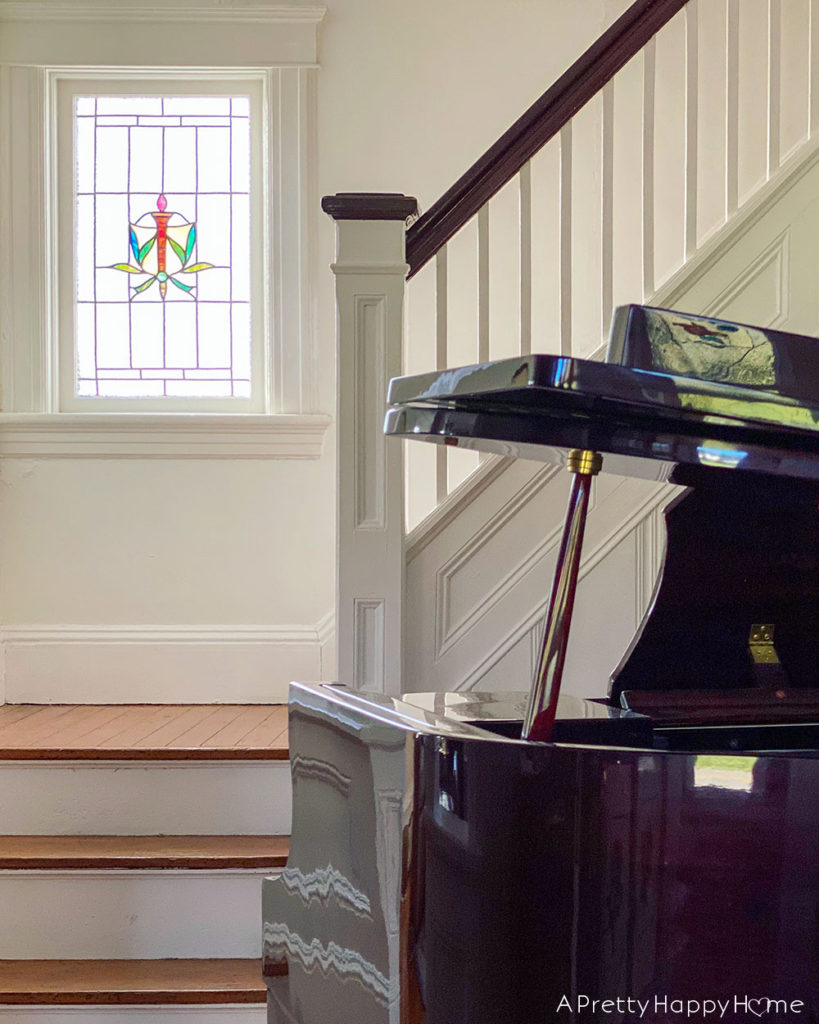
Why Reading Cursive Is a Helpful Skill For Owners of Old Houses
Here’s a truth bomb. It’s a shame cursive isn’t always taught in school these days because reading cursive is a helpful skill for owners of old houses to possess.
Not only do we have to be able to fix all the quirky things and live in houses where nothing is square or level, but now we have to be able to read cursive too.
No one told you you’d need to be a jack of all trades when they gave you that mortgage, did they?
Why is reading cursive a helpful skill for owners of old houses?
I’m so glad you asked.
If you want to research the history of your house, many records will have been recorded before typewriters and computers were used. Everything was handwritten in flowing cursive.
Even if the records are digitized, they are likely scans of old handwritten paperwork.
Examples of this could be census records, church records, or property deeds.
When I researched our circa 1780s home’s deed history at the county courthouse, I found that the records pertaining to our home were handwritten in cursive until 1925.
Given the age of our particular home that means I have more years of cursive records than I do of typed records.
Pull up a chair, your patience, and some Tylenol because reading all of this cursive legalese will take a while.
But why do you have to READ it? Aren’t there reference numbers or something to know that you have the correct documents for your property?
No. Not back then.
For a long time, lot and block numbers that identify a property were not a thing. The page numbering system the courthouse has that helps you find the property records is not as foolproof as you might think. You can’t rely on names because one person might have sold multiple pieces of property in the same year, so that means they are listed multiple times on the same page of a ledger.
From what I’ve learned doing my research, you have to rely on the handwritten, legal description of the property to know FOR SURE that you are referencing the correct property records.
Have a headache yet?
In addition, all of the records for one property are not in one place as they conveniently are when we do a Google search. They are scattered through hundreds or maybe thousands of binders and shelved library-style in a county courthouse records room.
The property description might, I kid you not, describe the property as starting at the corner of a road that no longer exists next to Mr. Smith’s parcel (he died 150 years ago and named all of his sons after him) and extending 14 chains to the northeast corner marked by a tree stump.
A chain is an actual unit of measurement, by the way. One chain is 66 feet. A chain is divided into 100 links and each link is 7.92 inches long.
If you know how to read cursive and find the correct property records, you can learn interesting things about your home like during a property inventory for foreclosure “one dung fork” might have been valued at 20 cents in the 1800s.
That antique barn pail that sells for hundreds of dollars now in a swanky antique store was valued at 15 cents.
I’m not sure what you are going to do with this information, but you won’t know until you read it. If you can read it.
I know what you’re thinking right now and you’re feeling confident because you learned to read and write cursive in school like I did. But have you ever tried to read your doctor’s scrawl when he or she writes you a prescription? There’s a reason they just send your prescription electronically to the pharmacy these days.
Bad handwriting.
Not to be petty, but in my humble opinion, some clerks had better handwriting than others. And by better I mean I can decipher it.
So that’s my case for the importance of being able to read cursive if you own an old home.
I’d also like to give a huge shout-out to all the recordkeepers. It might not be the most glamorous job in the world, but it is critically important to preserving history and maintaining a society that can function.
Daily life would grind to a halt if information like property records and vital records were not safely and accurately maintained. Thank your local recordkeepers, folks. They are doing important work and it’s an important way to spend our tax dollars.
Did you learn to read and write cursive? How about your kids? One of my kids did and one didn’t. How about yours? Please leave a comment on this blog post, email us here, or reach out via Instagram or Facebook.
Happy Handwriting!
P.S. The next National Handwriting Day is January 23, 2025. Yes, that’s a thing. If you celebrate, let me know.
P.P.S. I’ve been intentional about writing “owners of old houses” in this blog post because it sounds better than “old house owners” or “old homeowners.” Those are two different things and I didn’t want to accidentally call anyone old.
I know it’s ironic that you’re reading a typewritten blog post about cursive, but I have more typewritten blog posts that you might enjoy!
The Year Without Grades – What I Learned As a Parent
Vintage Toolbox Flower Arrangement (I spent a lot more than 15 cents for this toolbox.)









